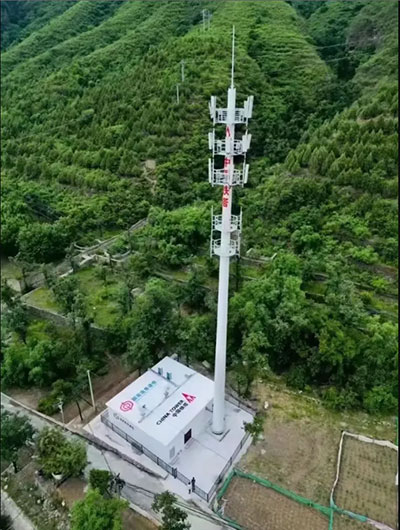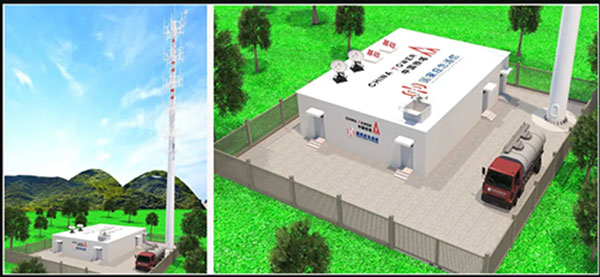The reputation of the "fortress base station" is a bit scary, making people think it is used for warfare, but in fact it is not. Its full name should be called "New Anti Disaster Fortress Base Station".
That's right, this thing is specifically designed for disaster relief.
Recently, extreme rainfall has occurred in many parts of China, causing geological disasters such as floods and landslides, resulting in huge losses.
Natural disasters have occurred, and many base stations have not been spared. Some base stations have been flooded, some have experienced power outages, and some have experienced transmission interruptions. The ultimate result is withdrawal from service.
Withdrawing services will result in a lack of mobile phone signal in the surrounding areas, which will seriously affect the ability of disaster victims to call for rescue and report safety, as well as the dispatch and coordination of disaster relief personnel.
In July last year, some areas of Beijing were hit by extremely heavy rainstorm and floods. Some rivers, bridges and houses in villages were severely damaged. Water, electricity and signals were cut off for a time, which attracted national attention.
After the flood receded, Beijing specifically pointed out the need to enhance the disaster prevention and resistance level of mobile communication base stations and improve their ability to respond to major natural disasters when organizing disaster reconstruction work.
So, deploying a certain number of new disaster resistant fortress base stations was put on the agenda.
On March 7, 2024, the Beijing Municipal Administration of Communications held a special meeting to promote the construction of fortress base stations after the "23.7" disaster, organizing and coordinating the relevant work of various units, and making every effort to promote the construction progress of fortress base stations.
With the joint efforts of various units such as the Traffic Management Bureau, operators, and iron tower companies, the first "fortress base station" located in Fozizhuang, Fangshan District, Beijing was successfully completed in June this year.


Next, let's take a closer look at the differences between fortress base stations and regular base stations. Why can it be called a 'fortress'.
Fortress base stations face extreme disaster scenarios such as earthquakes, floods, typhoons, and ice and snow, and have targeted improvements in the construction standards of base station communication equipment, power supply, transmission, civil engineering, installation technology, etc., thus possessing extremely high resistance to damage and emergency communication support capabilities.

In the event of a disaster, the power supply and transmission resources of the base station are most susceptible to impact.
In terms of power, the fortress base station is equipped with specialized batteries (lead-acid battery backup) and oil engines (50Kw). Require the ability to support backup power for 4G devices for 144 hours in emergency situations (including 24 hours for batteries and 120 hours for gasoline engines).
In terms of transmission, a "fiber optic cable+satellite" approach is adopted.
The optical cable is mainly buried directly. To ensure the security of the incoming and outgoing routes, two different physical routes of the optical cable are equipped to ensure the independence of the two incoming and outgoing routes.
For satellites, equipped with high-throughput satellite transmission systems and modems, automatic switching can be achieved through devices within the base station.
In terms of station building structure, a concrete frame structure and high-strength hot-rolled steel bars are used, with a seismic fortification intensity of 9 °.
In terms of snow resistance, the snow load should not be less than 0.60KN/m2, and it can withstand the once-in-a-century snowstorm disaster.
In terms of wind resistance, it can withstand wind pressure of not less than 0.65KN/m2 and withstand strong winds of level 12.
The base station also needs to be equipped with complete emergency equipment and facilities, such as fire extinguishing equipment, emergency broadcasting equipment, hand/foot operated generator equipment, Beidou short message equipment, security monitoring camera equipment, etc., to cope with various emergencies.

